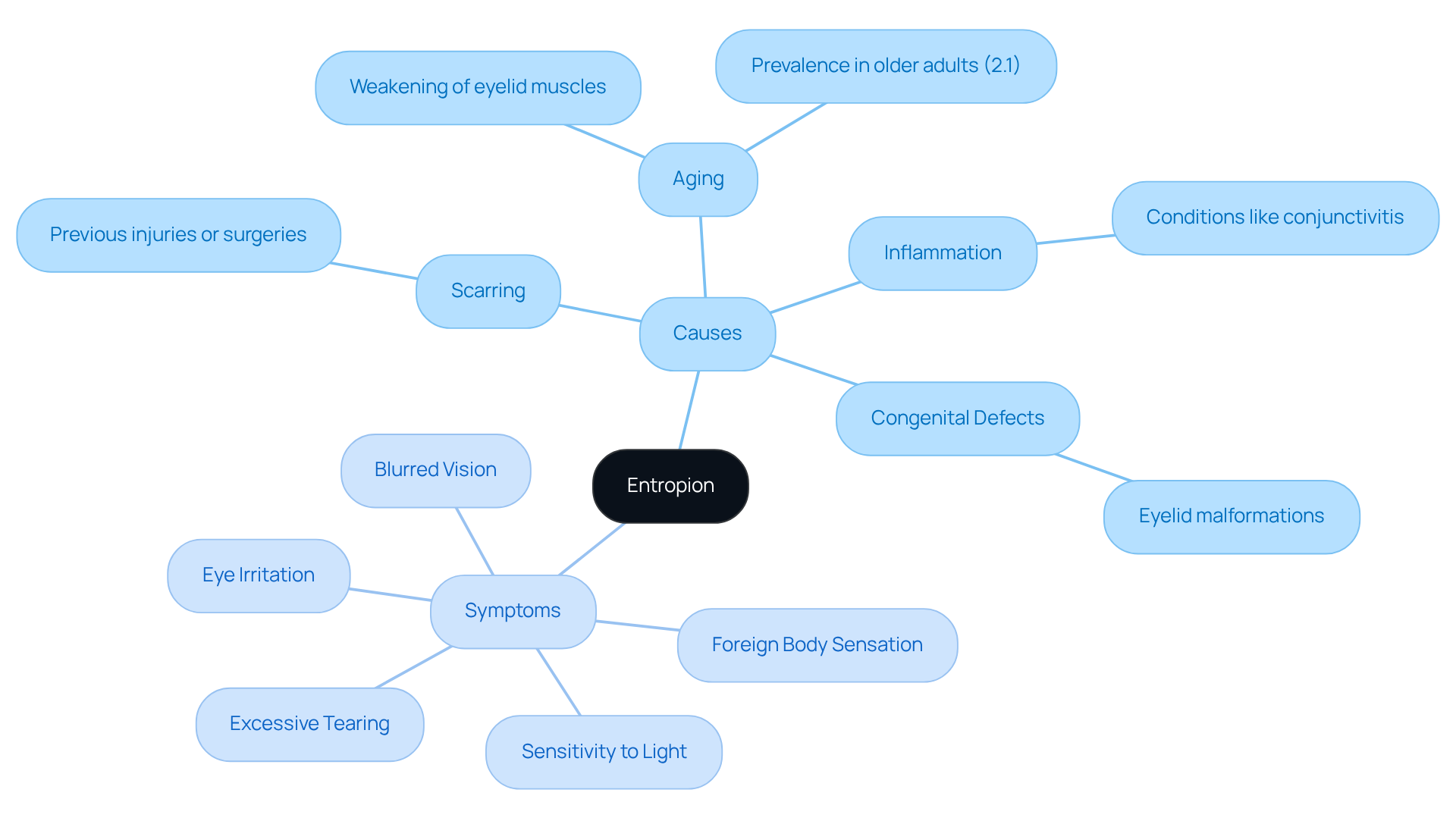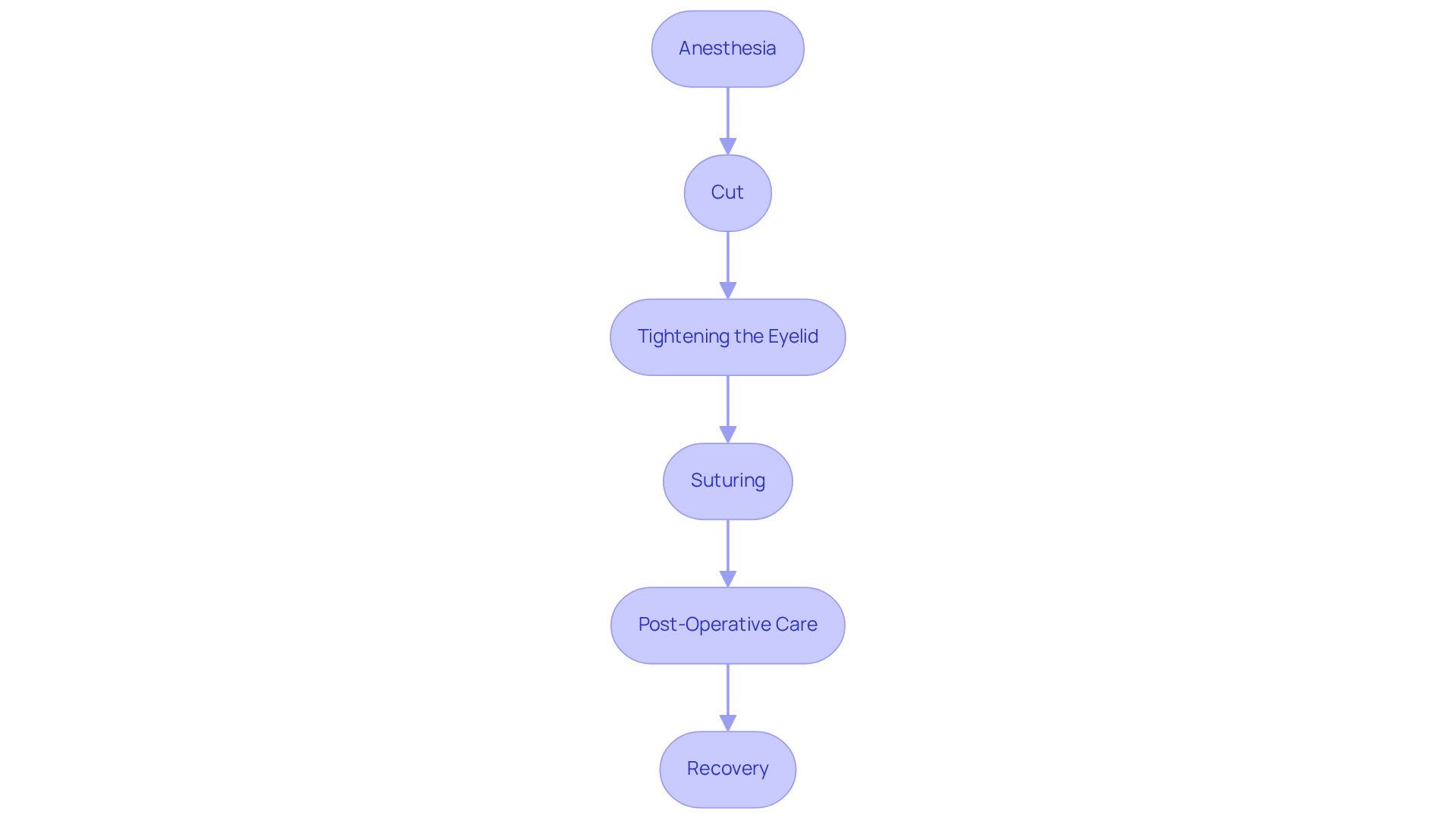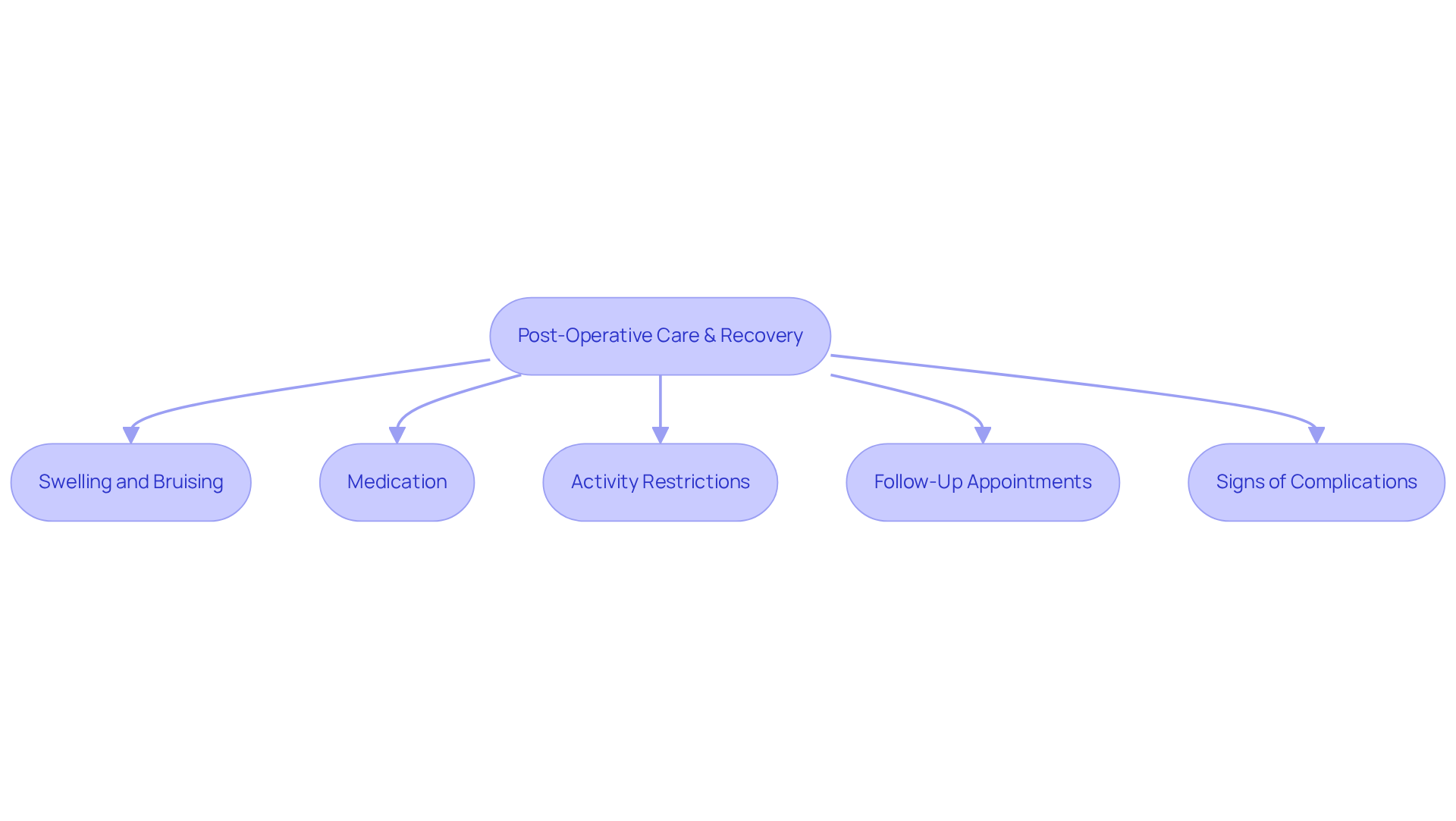Posted by: Northwest Eye in General on August 16, 2025
Overview
Entropion surgery is a procedure designed to correct the inward turning of the eyelid, which can understandably cause discomfort and potential eye damage. We understand that considering surgery can be daunting, and we are here to help you through this process. The surgery involves several key steps:
- Administering anesthesia
- Making an incision
- Adjusting the eyelid position
- Suturing
- Providing post-operative care
Each of these steps is aimed at restoring proper eyelid function and minimizing complications.
It’s common to feel anxious about the procedure, but it’s reassuring to know that a high success rate has been reported in patients. Your comfort and well-being are our top priorities, and we are committed to supporting you every step of the way. Remember, you are not alone in this journey, and we are here to answer any questions you may have.
Introduction
Entropion, a condition where the eyelid turns inward, can be concerning, as it poses significant risks to eye health, leading to irritation and potential vision loss. We understand that learning about this condition can feel overwhelming. Understanding the causes, symptoms, and the surgical procedure to correct this issue is crucial for those affected.
Many may wonder: what does the journey to recovery look like after entropion surgery, and how can one ensure a smooth healing process? This article delves into the intricacies of entropion surgery, offering insights into the procedure, recovery expectations, and essential care tips for a successful outcome.
We are here to help you through this process.
Define Entropion: Causes and Symptoms
Entropion is a concerning condition that may require entropion surgery, as it involves the inward turning of the skin around the eye, especially affecting the lower lid. This inversion can lead to the eyelashes rubbing against the cornea, causing irritation, discomfort, and even potential damage to the eye. It’s important to understand the primary causes of entropion, which include:
- Aging: As we age, the natural weakening of eyelid muscles and skin can contribute significantly to entropion. This is particularly prevalent in older adults, with about 2.1% of individuals over 60 affected by this condition.
- Scarring: Previous injuries or surgical procedures may create scar tissue that pulls the lid inward, resulting in the eyelashes turning inward.
- Inflammation: Conditions like conjunctivitis can cause swelling of the eyelids, leading to the lashes turning inward.
- Congenital defects: Some individuals are born with eyelid malformations that make them more susceptible to this condition.
The symptoms of entropion can be quite distressing, and they may include:
- Eye irritation and redness
- Excessive tearing or discharge
- Sensitivity to light
- A sensation of having something in the eye (foreign body sensation)
- Blurred vision, especially if the cornea is damaged.
We understand that these symptoms can significantly impact your eyesight. If left untreated, eyelid inversion may require entropion surgery to prevent serious issues such as eye infections, corneal abrasions, and even loss of vision. Early diagnosis and intervention are crucial to preventing long-term damage associated with entropion surgery. This highlights the importance of regular eye examinations, particularly for older adults. As noted by the Cleveland Clinic, getting an annual eye exam can help catch vision problems early and maintain eye health.
Additionally, if you undergo eyelid surgery, it’s common to experience temporary side effects such as swelling and bruising. Rest assured, these effects are manageable with medication and cold compresses. We are here to help you through this process and ensure your .

Explain the Entropion Surgery Procedure
We understand that dealing with entropion surgery, which addresses the condition where the lower eyelid rolls inward towards the eye, can be concerning. The procedure known as entropion surgery to correct this condition typically involves several key steps, and we are here to guide you through them with care.
- Anesthesia: The surgery is generally performed under local anesthesia, ensuring your comfort and pain relief throughout the procedure. It’s common to feel a bit anxious about entropion surgery, but rest assured, you will be well cared for.
- Cut: A small cut is made at the outer corner of the eye to effectively access the tissues. This step is crucial for the success of the entropion surgery procedure.
- Tightening the Eyelid: Dr. Schmitt, the surgeon, may remove excess skin or tighten the retractors to restore the proper position of the upper and lower lids. Techniques such as the lateral tarsal strip or wedge resection are commonly employed to achieve optimal results. We want you to feel reassured that and these methods are designed with your best outcome in mind.
- Suturing: After the adjustments, the skin around the eye is stitched back into position, ensuring it no longer turns inward. The sutures used are often dissolvable, which means there’s no need for removal later on.
- Post-Operative Care: Following the procedure, you will be monitored for any immediate complications, and we will provide you with detailed instructions for care at home. This support is vital as you begin your recovery journey.
The entire entropion surgery typically lasts about 30 minutes and is performed on an outpatient basis, allowing you to return home the same day. This effective method of entropion surgery leads to high success rates, with many patients noticing considerable enhancement in signs and eye function following the surgery. In fact, entropion surgery has been found effective in 86% of eyelids, and follow-up monitoring has shown no recurrences or complications such as ectropion, retraction, lagophthalmos, or epiphora.
We recognize that understanding these conditions is essential. Ectropion, marked by sagging and outward drooping of the eyelids, can also result in comparable symptoms and might necessitate surgical intervention. Remember, we are here to help you through this process, ensuring you feel supported every step of the way.

Outline Post-Operative Care and Recovery Expectations
Post-operative care is essential for a successful recovery after . We understand that this can be a concerning time for you, and we want to ensure you feel supported throughout the process. Here are some key aspects you can anticipate:
- Swelling and Bruising: It’s common to experience mild swelling and bruising around the eyelid after surgery, typically resolving within 1-2 weeks. Using cold compresses regularly can effectively relieve these issues and lessen discomfort.
- Medication: To prevent infection, your surgeon may prescribe antibiotic ointments, along with anti-inflammatory medications to help manage discomfort during your healing process.
- Activity Restrictions: We encourage you to avoid strenuous activities, heavy lifting, and rubbing your eyes for at least two weeks post-surgery. This will help facilitate proper healing and minimize complications. Most patients can resume normal activities within a week; however, complete healing may take several weeks, with final results typically becoming evident after about 2-3 months.
- Follow-Up Appointments: Regular follow-up visits are necessary to monitor your healing progress. Stitches are typically removed one week after the procedure to ensure proper recovery.
- Signs of Complications: It’s important to remain vigilant for signs of complications, such as increased redness, discharge, or severe pain. If you notice any of these symptoms, please contact your surgeon promptly.
We recommend planning to be at home for a few days following your surgery to aid in recovery. As Dr. Michael Connor emphasizes, understanding the recovery process after entropion surgery is vital for setting realistic expectations and ensuring a smooth transition back to daily life. Remember, we are here to help you through this process.

Conclusion
Entropion surgery is a vital procedure aimed at correcting the inward turning of the eyelid, which can cause significant discomfort and even lead to vision loss. We understand that facing this condition can be overwhelming, but gaining insight into the intricacies of the surgery—from its causes and symptoms to the surgical process and recovery expectations—empowers you to make informed decisions about your eye health.
This article highlights the various causes of entropion, including:
- Aging
- Scarring
- Inflammation
- Congenital defects
It also discusses the distressing symptoms that may arise. The article details the surgical procedure, emphasizing:
- The importance of anesthesia
- The steps taken to correct the eyelid position
- The supportive post-operative care that is crucial for a smooth recovery
With a high success rate and effective techniques, entropion surgery can significantly enhance the quality of life for those affected.
Ultimately, being proactive about your eye health is essential. Regular eye examinations can help catch conditions like entropion early, preventing further complications. If you are considering entropion surgery, understanding the procedure and recovery process is vital. This knowledge not only alleviates anxiety but also encourages you to engage actively in your healing journey, ensuring a successful outcome and a return to optimal eye function. We are here to help you through this process.
Frequently Asked Questions
What is entropion?
Entropion is a condition where the skin around the eye, particularly the lower lid, turns inward, causing the eyelashes to rub against the cornea, which can lead to irritation and potential eye damage.
What are the primary causes of entropion?
The primary causes of entropion include aging, scarring from previous injuries or surgeries, inflammation from conditions like conjunctivitis, and congenital defects that affect eyelid structure.
What are the symptoms of entropion?
Symptoms of entropion can include eye irritation and redness, excessive tearing or discharge, sensitivity to light, a sensation of having something in the eye, and blurred vision, especially if the cornea is damaged.
Why is it important to treat entropion?
If left untreated, entropion can lead to serious issues such as eye infections, corneal abrasions, and even loss of vision. Early diagnosis and intervention are crucial to prevent long-term damage.
How can one prevent long-term damage associated with entropion?
Regular eye examinations, especially for older adults, can help catch vision problems early and maintain eye health, thus preventing long-term damage associated with entropion.
What should one expect after undergoing entropion surgery?
After entropion surgery, it is common to experience temporary side effects such as swelling and bruising, which can be managed with medication and cold compresses.






